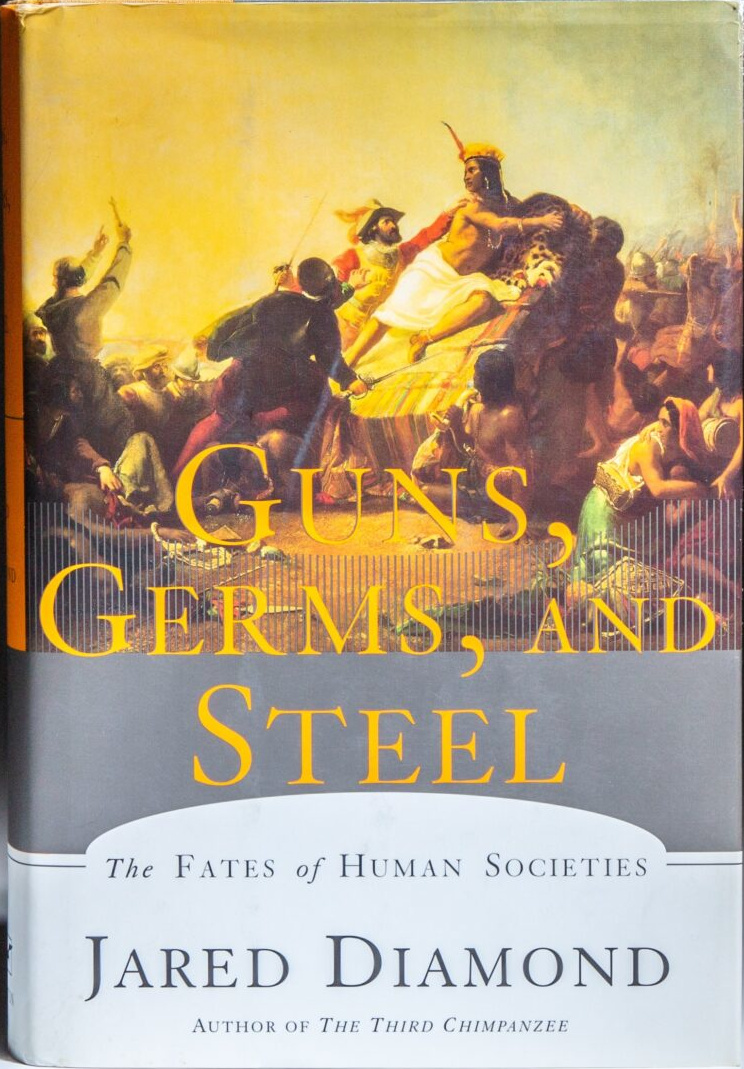Matt Lehrer reviewed Guns, Germs and Steel by Jared Diamond
Very convincing, possibly misleading
4 stars
I understand the historian perspective on this book is very negative but I thoroughly enjoyed and was convinced by it at the time

Hardcover, 480 pages
English language
Published July 4, 1997 by W.W. Norton.
Why did Eurasians conquer, displace, or decimate Native Americans, Australians, and Africans, instead of the reverse? In this groundbreaking book, evolutionary biologist Jared Diamond stunningly dismantles racially based theories of human history by revealing the environmental factors actually responsible for history's broadest patterns. Here, at last, is a world history that really is a history of all the world's peoples, a unified narrative of human life even more intriguing and important than accounts of dinosaurs and glaciers.
The story begins 13,000 years ago, when Stone Age hunter-gatherers constituted the entire human population. Around that time, paths of development of human societies on different continents began to diverge greatly. Early domestication of wild plants and animals in the Fertile Crescent, China, Mesoamerica, the southeastern United States, and other areas gave peoples of those regions a head start. Why wheat and corn, cattle and pigs, and the modern world's other "blockbuster" crops …
Why did Eurasians conquer, displace, or decimate Native Americans, Australians, and Africans, instead of the reverse? In this groundbreaking book, evolutionary biologist Jared Diamond stunningly dismantles racially based theories of human history by revealing the environmental factors actually responsible for history's broadest patterns. Here, at last, is a world history that really is a history of all the world's peoples, a unified narrative of human life even more intriguing and important than accounts of dinosaurs and glaciers.
The story begins 13,000 years ago, when Stone Age hunter-gatherers constituted the entire human population. Around that time, paths of development of human societies on different continents began to diverge greatly. Early domestication of wild plants and animals in the Fertile Crescent, China, Mesoamerica, the southeastern United States, and other areas gave peoples of those regions a head start. Why wheat and corn, cattle and pigs, and the modern world's other "blockbuster" crops and livestock arose in those particular regions and not elsewhere was, until now, but faintly understood.
The localized origins of farming and herding prove to be only part of the explanation for the differing fates of different peoples. The very unequal rates at which food production spread from those initial centers had much to do with other features of climate and geography--such as the differing sizes, locations, and even shapes of the continents. Societies that advanced beyond the hunter-gatherer stage were more likely to develop writing, technology, government, organized religions-- as well as nasty germs and potent weapons of war.
It was those societies, adventuring on sea and land, that expanded to new homelands at the expense of other peoples. The most familiar examples involve the conquest of non-European peoples by Europeans in the last 500 years, beginning with voyages in search of precious metals and spices and often lending to invasion of native lands and decimation of native inhabitants through slaughter and introduced diseases. Similar population replacements, less familiar to American readers, unfolded earlier within Southeast Asia, sub-Saharan Africa, and other parts of the world.
A major advance in our understanding of human societies, Guns, Germs, and Steel chronicles the way that the modern world, and its inequalities, came to be. It is a work rich in dramatic revelations that will fascinate readers even as it challenges conventional wisdom.
I understand the historian perspective on this book is very negative but I thoroughly enjoyed and was convinced by it at the time